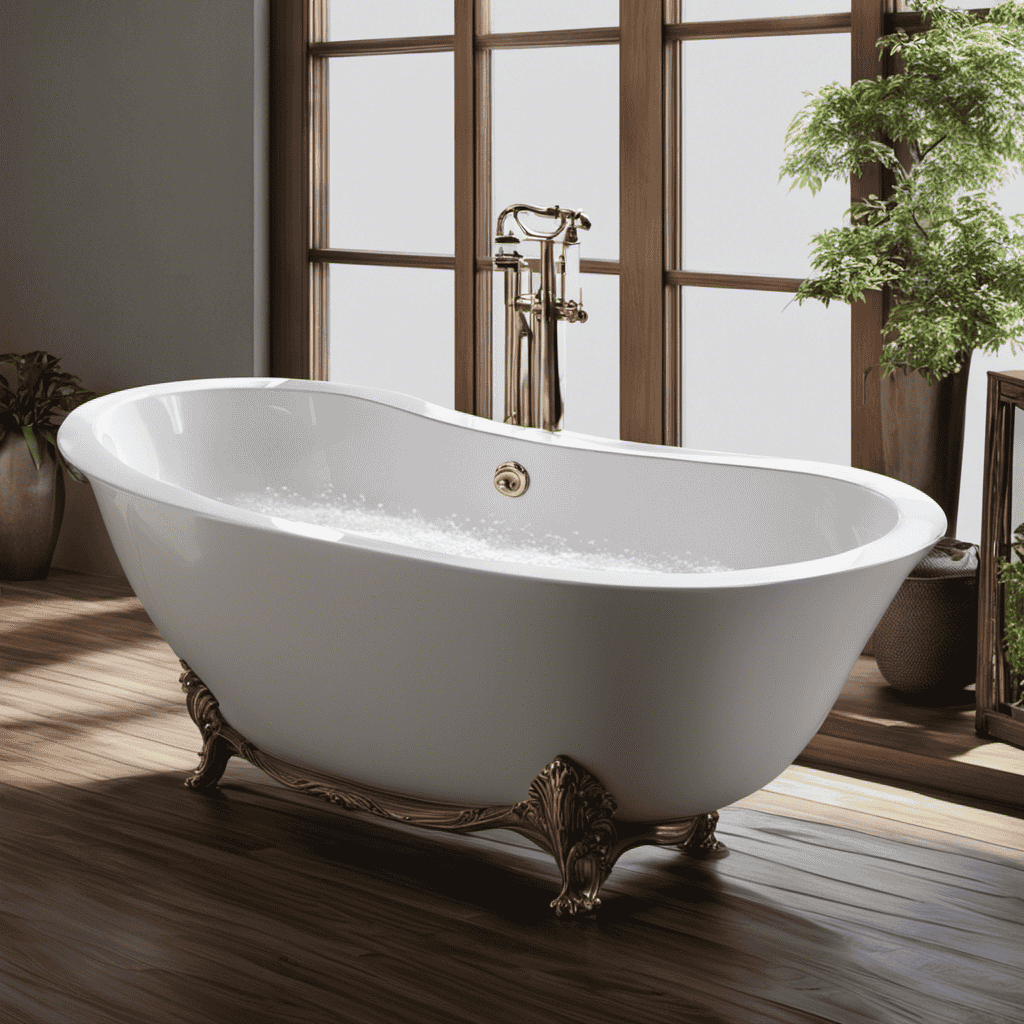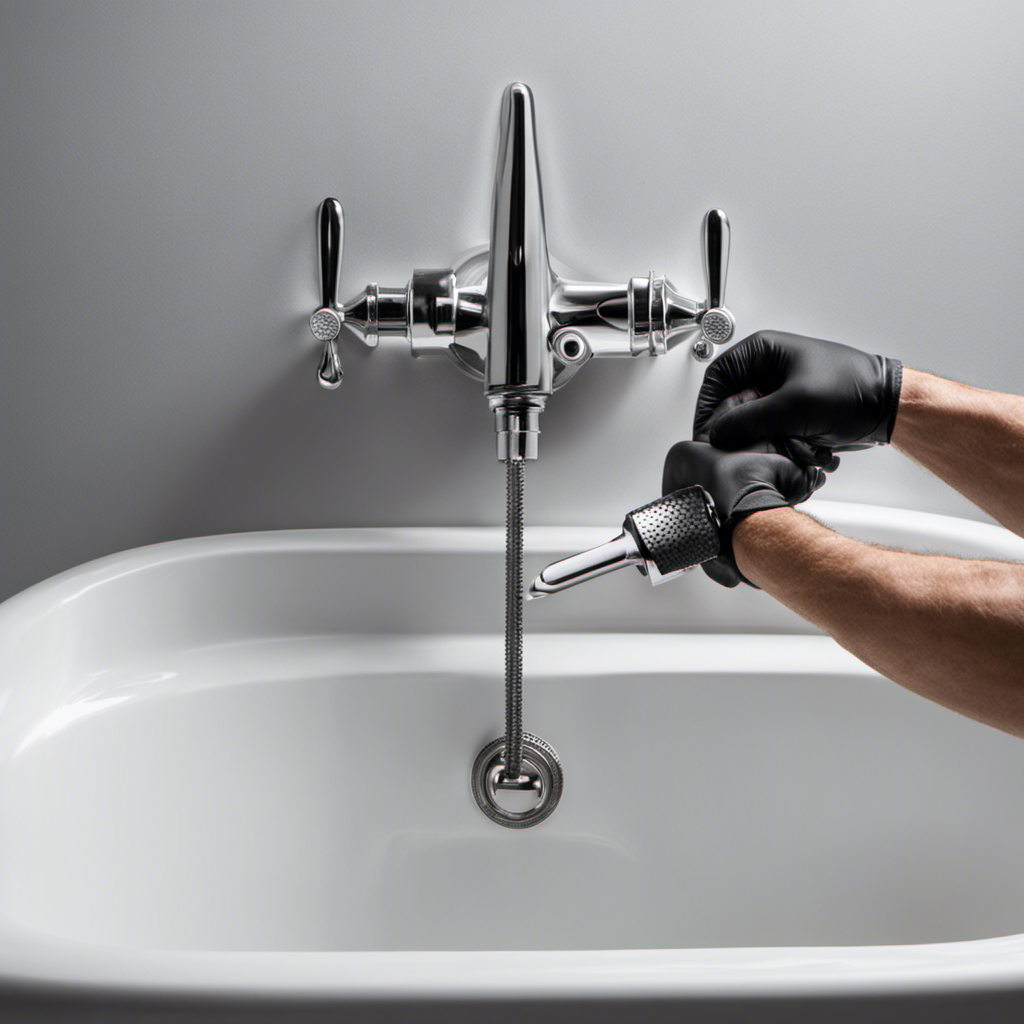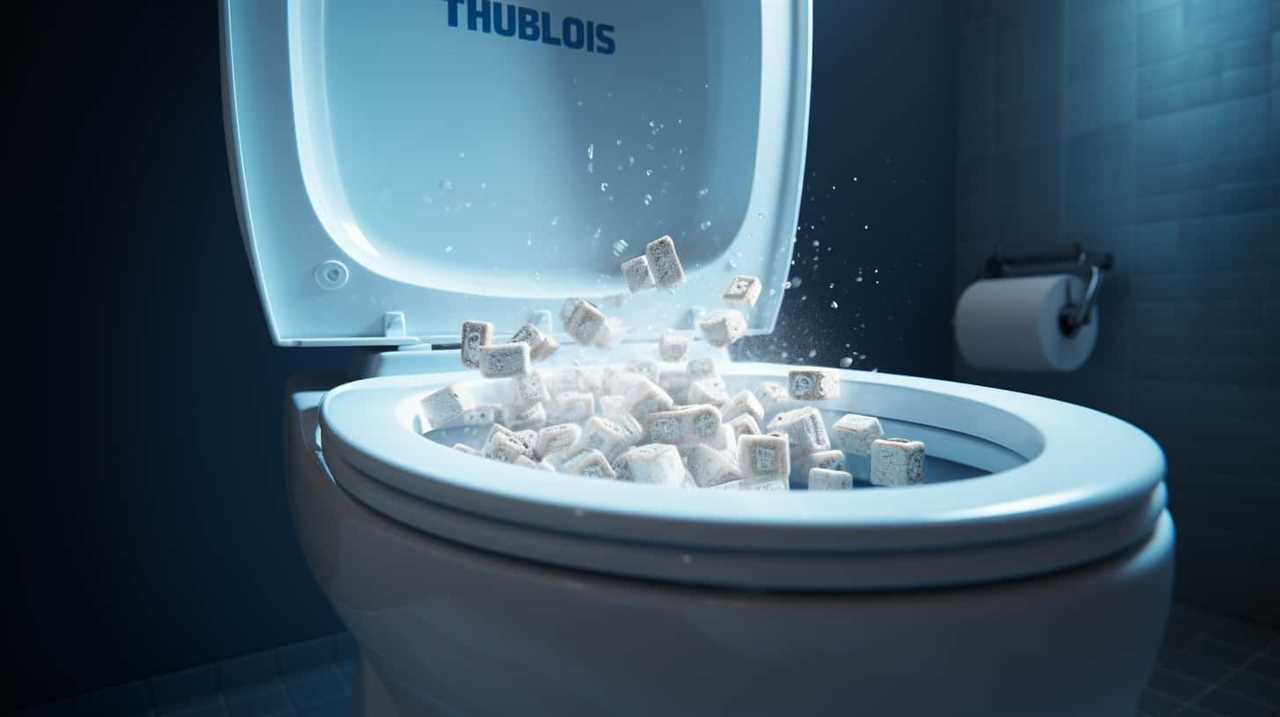Did you know that refinishing a bathtub can save you up to 80% compared to replacing it?
In this article, I’ll guide you through the steps to refinish your bathtub yourself, giving it a fresh and rejuvenated look.
With a few simple tools and the right refinishing kit, you can transform your worn-out bathtub into a beautiful centerpiece of your bathroom.
Follow along as I share my knowledge and detailed instructions to help you successfully refinish your bathtub DIY-style.
Key Takeaways
- Refinishing a bathtub can save up to 80% compared to replacing it.
- Preparing the bathtub surface properly is essential for a successful refinishing project.
- Choosing the right refinishing kit is important for color options and durability.
- Cleaning and repairing the bathtub regularly helps maintain its appearance and prevent further damage.
Preparing the Bathtub Surface
Before starting the refinishing process, it’s important to thoroughly clean and sand the bathtub surface. This ensures that the new paint adheres properly and gives a smooth and professional finish.
To remove old paint, I recommend using a paint stripper specifically designed for bathtubs. Apply the stripper to the surface, following the manufacturer’s instructions, and let it sit for the recommended amount of time. Then, using a scraper, gently remove the old paint.
Next, it’s time to sand the surface. Start by using a coarse-grit sandpaper to remove any remaining paint or rough patches. Then, switch to a finer-grit sandpaper to smooth out the surface. Be sure to sand in a circular motion, paying extra attention to any areas that are rough.
Once the surface is clean and smooth, you’re ready to move on to the next step of the refinishing process.
Choosing the Right Refinishing Kit
When deciding on the right kit, make sure you consider the color options and durability of the products available. It’s important to choose a kit that matches your bathroom decor and will withstand daily use.
There are several advantages to professional bathtub refinishing kits:
- Cost-effective: Professional kits are often more affordable than hiring a professional to refinish your bathtub.
- Easy to use: These kits come with detailed instructions, making it easy for DIY enthusiasts to achieve professional-looking results.
In order to maintain a refinished bathtub, it’s important to follow these tips:
- Avoid abrasive cleaners: Use mild, non-abrasive cleaners to avoid scratching the surface.
- Regular cleaning: Clean your refinished bathtub regularly to prevent the build-up of dirt and grime.
By choosing the right refinishing kit and properly maintaining your refinished bathtub, you can enjoy a beautiful and long-lasting finish.
Now, let’s move on to the next section about cleaning and repairing the bathtub.
Cleaning and Repairing the Bathtub
To keep your newly refinished tub looking its best, make sure you regularly clean and repair any minor damages. Proper bathtub maintenance is essential for preventing future damage and prolonging the lifespan of your refinishing job. Cleaning your bathtub regularly will help remove soap scum, mineral deposits, and any other buildup that can dull the surface. Repairing any minor damages, such as chips or scratches, will prevent them from becoming larger issues over time. Here is a table outlining some simple cleaning and repair techniques to keep your bathtub in excellent condition:
| Cleaning Techniques | Repair Techniques |
|---|---|
| Use a non-abrasive cleaner and a soft cloth or sponge to wipe down the surface of the tub. | Fill in chips or scratches with a bathtub repair kit following the manufacturer’s instructions. |
| Rinse thoroughly with water to remove any residue from the cleaner. | Sand down the repaired area until it is smooth and level with the surrounding surface. |
| Dry the tub with a clean towel or allow it to air dry completely. | Apply a waterproof filler to the sanded area and let it dry. |
| For stubborn stains, use a paste made of baking soda and water and gently scrub the surface with a soft brush. | Sand the filled area again to ensure it is smooth and even. |
Applying the Refinishing Coating
Make sure you thoroughly clean the surface of your tub before applying the refinishing coating. This step is crucial to ensure a smooth and long-lasting finish.
Here are some tips for achieving a smooth finish and common mistakes to avoid:
-
Tips for achieving a smooth finish:
-
Use a high-quality refinishing coating that is specifically designed for bathtubs.
-
Follow the manufacturer’s instructions carefully and apply the coating in thin, even layers.
-
Use a foam roller or paintbrush to apply the coating, ensuring smooth and consistent coverage.
-
Allow each coat to dry completely before applying the next one.
-
Sand the surface lightly between coats to remove any imperfections and promote adhesion.
-
Common mistakes to avoid:
-
Applying the coating too thickly, which can lead to drips and unevenness.
-
Rushing the drying time, which can result in a tacky finish.
-
Neglecting to properly prepare the surface by removing old caulk and roughing up the surface.
-
Not wearing protective gear, such as gloves and a mask, when working with refinishing chemicals.
Curing and Finishing Touches
After applying the final coat of refinishing coating, allow it to cure for at least 48 hours before using your tub again.
This curing process is crucial to ensure that the coating properly sets and hardens, creating a durable and long-lasting finish.
During this time, it’s important to avoid any contact with water or other liquids as it can interfere with the curing process and potentially damage the newly applied sealant.
To expedite the curing process, you can place a fan near the tub to improve air circulation and aid in the drying process.
Additionally, avoid placing any objects or heavy items on the tub during this time to prevent any indentations or marks on the freshly applied coating.
Once the 48 hours have passed, you can enjoy your beautifully refinished bathtub.
Conclusion
In conclusion, giving your bathtub a DIY refinish is like giving it a luxurious makeover. By following the steps outlined in this article, you can transform your worn-out tub into a sparkling oasis.
Remember, preparation is key, so take the time to clean and repair any imperfections before applying the refinishing coating. Just like an artist putting the final brushstroke on a masterpiece, the curing process will bring out the true beauty of your revitalized bathtub.
So go ahead, indulge in this rewarding project and enjoy the satisfaction of a job well done.









